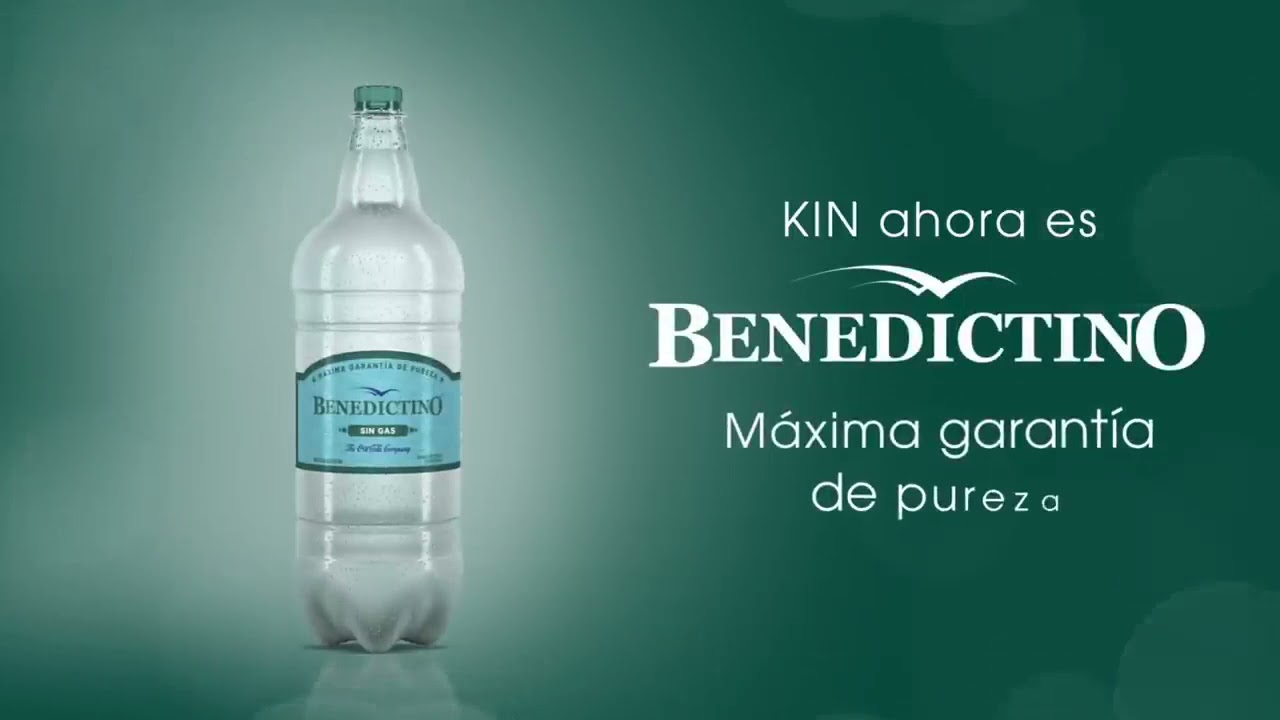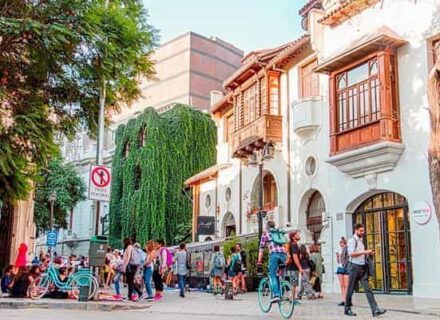Benedictino Water represents one of Latin America’s most remarkable entrepreneurial success stories, transforming from a modest Chilean startup into a strategic market disruptor within Coca-Cola’s Peruvian portfolio. This premium water brand exemplifies how innovative positioning, aggressive pricing strategies, and multinational corporate backing can revolutionize established beverage markets across South America.
Chilean Origins: A Vision Born from Market Opportunity
The Benedictino story began in 2005 when Chilean entrepreneur Marcelo Guital and his partners Iván Rodríguez and Rodrigo Gonzáles identified a significant market gap in Chile’s underdeveloped bottled water sector. At that time, Chilean consumers consumed merely 4 liters of bottled water per capita annually, dramatically lower than Argentina’s 25 liters and Europe’s 50+ liters.
With an initial investment of just $500,000, the founders established their water purification operation using NASA-grade purification technology without chemical treatments. Their strategy focused on positioning Benedictino as a “radical superior water” that was technically verifiable, sodium-free, and calcium-free. This premium positioning proved extraordinarily successful – the brand captured 5% market share in its first year and surged to 17% by 2006, generating over $3 billion Chilean pesos in sales equivalent to 20 million liters.
The brand’s success attracted attention from luxury hospitality venues, becoming the exclusive water for Ritz Carlton, Hyatt hotels, and achieving the distinction of being the only Chilean product sold at Starbucks. This premium positioning created what Guital described as “immaculate purity dressed with quality clothing” with glamour and sophisticated design.
Strategic Acquisition and South American Expansion
Recognizing Benedictino’s disruptive potential, Coca-Cola acquired the brand for over $5 million, integrating it into their diversified beverage portfolio. This acquisition represented Coca-Cola’s strategic shift toward healthier beverage options and premium water segments across Latin American markets.
The brand’s Chilean success model demonstrated remarkable scalability – from 2005 to 2006, Benedictino grew from startup status to controlling nearly one-fifth of Chile’s bottled water market through superior product quality, innovative marketing, and strategic distribution partnerships. This rapid growth trajectory validated the brand’s potential for regional expansion.
Peru Market Entry: Strategic Positioning in a Complex Landscape
Coca-Cola officially launched Benedictino in Peru during 2019 as part of their comprehensive market penetration strategy. The Peruvian beverage market presented unique challenges and opportunities, with Inca Kola maintaining 48% market dominance over traditional Coca-Cola products, demonstrating strong consumer preference for locally-adapted brands.
Gabriel Chávez, Coca-Cola Peru’s marketing manager, positioned Benedictino as a complementary brand to their existing San Luis water line, which already held 30% of Peru’s bottled water market. This dual-brand strategy allowed Coca-Cola to capture different price segments without internal cannibalization.
The Peruvian market context was particularly compelling for water brands. With 48% of Peru’s 34 million population lacking access to safe water and 42% lacking adequate sanitation facilities, bottled water serves as a critical health necessity rather than mere convenience. Additionally, Peru’s 1,170 cubic meters annual per capita water consumption reflects significant infrastructure challenges that create sustained demand for bottled alternatives.
Market Dynamics and Competitive Strategy
Peru’s bottled water market generated $1.62 billion combined revenue in 2025, with at-home consumption representing $1.36 billion and out-of-home sales contributing $255.8 million. The market demonstrates steady growth with 2.18% annual CAGR projected through 2029, indicating sustained expansion opportunities.
Benedictino entered this market with aggressive pricing strategy, offering 500ml bottles for 1-2 soles and 1.5-liter bottles at comparable prices, positioning as the most economical option available. This pricing approach targeted Peru’s expanding middle class while maintaining the premium purification quality that defined the brand’s Chilean success.
The competitive landscape includes established players like San Carlos (PepsiCo), Cielo, and San Luis (Coca-Cola). Benedictino’s positioning as a “combat brand” allows Coca-Cola to compete across multiple price segments while preserving San Luis’s premium positioning.
Manufacturing Infrastructure and Production Capabilities
Benedictino production in Peru operates through Arca Continental Lindley, Coca-Cola’s exclusive bottling partner with 89+ years of market presence. The company maintains six strategically located industrial plants across Peru:
- Pucusana Plant: State-of-the-art facility inaugurated in 2015 with $200 million investment, producing 55% of total beverage volume with LEED Platinum certification
- Zárate Plant: Lima metropolitan coverage
- Trujillo Plant: Northern coastal region
- Arequipa Plant: Southern coverage
- Iquitos Plant: Amazon region access
- Cusco Plant: Southeastern market penetration
This infrastructure supports 4,500+ employees nationwide serving 370,000+ clients, creating Peru’s largest commercial and distribution network. The production system benefits from 97% renewable energy usage across five plants, demonstrating commitment to sustainable manufacturing practices.
Technical Specifications and Product Innovation
Benedictino maintains its Chilean heritage of superior purification, utilizing multi-stage treatment processes including:
- Advanced filtration systems
- Ozonization for microorganism elimination
- Ultraviolet light purification
- Comprehensive microbiological quality control
The resulting product contains less than 1mg sodium per 100ml, making it suitable for low-sodium dietary requirements. This technical superiority supports marketing claims of being “one of the world’s purest waters” while maintaining zero calories, fats, carbohydrates, and proteins.
Distribution Strategy and Market Penetration
Benedictino’s initial market rollout targeted Lima, Ica, Ancash, Piura, Chiclayo, Chimbote, Cajamarca, Ayacucho, Huancayo, and central Selva regions. The distribution strategy leverages multiple channels:
Traditional Retail: Metro, Wong, Plaza Vea, Real Plaza supermarket chains
Convenience Channels: Traditional bodegas and neighborhood stores
Digital Platforms: Rappi delivery service integration
Food Service: Restaurant and hospitality sector penetration
Institutional Sales: Office and corporate account development
This multi-channel approach ensures broad market accessibility while maintaining competitive pricing across all segments.
Economic Impact and Industry Contribution
The Coca-Cola System in Peru contributes S/ 7.42 billion annually to the national economy, supporting over 131,000 jobs including 4,932 direct positions and 126,200 indirect employment opportunities. This represents a 1:26 job multiplication ratio, demonstrating significant economic leverage.
Benedictino’s integration into this system strengthens Peru’s beverage manufacturing sector while supporting local supplier networks, transportation services, and retail partnerships. The brand’s success contributes to technology transfer, skills development, and industrial modernization across Peru’s manufacturing base.
Sustainability Initiatives and Environmental Impact
As part of Arca Continental’s operations, Benedictino benefits from Science Based Targets Initiative validated commitments for carbon footprint reduction through 2030. Key sustainability measures include:
- 30% average recycled resin content in plastic packaging, targeting 50% by 2030
- Renewable energy sourcing for production facilities
- Water resource conservation through advanced recycling systems
- Circular economy principles in packaging design and waste management
These initiatives position Benedictino as an environmentally conscious choice for sustainability-minded consumers while meeting international corporate responsibility standards.
Regional Market Context and Growth Potential
South America’s bottled water market demonstrates robust growth dynamics with 11.57% projected CAGR through 2030. Brazil dominates with 56.77% market share, while Argentina shows the highest growth rate at 9.23% CAGR. Peru’s position within this regional context offers significant expansion opportunities as urbanization, health consciousness, and disposable income continue rising.
The broader Latin American beverage landscape shows increasing demand for functional waters, premium positioning, and convenience-focused packaging. Benedictino’s proven positioning strategy and technical superiority align perfectly with these market trends.
Consumer Behavior and Market Reception
Peru’s water purchase frequency averages every 11 days compared to soft drinks purchased every 5 days, indicating substantial category growth potential. Consumer research shows increasing preference for purity-focused marketing, health-conscious positioning, and transparent ingredient communication.
The per capita consumption of 57.27 liters annually in Peru’s bottled water market represents significant growth opportunity compared to more mature markets. As infrastructure challenges persist and health awareness increases, premium water brands like Benedictino are positioned for sustained growth.
Future Outlook and Strategic Implications
Benedictino’s successful transition from Chilean startup to Peruvian market disruptor demonstrates the power of strategic brand acquisition, localized market adaptation, and operational excellence. The brand’s premium quality positioning combined with accessible pricing creates a sustainable competitive advantage in Peru’s evolving beverage landscape.
With Coca-Cola’s distribution infrastructure, Arca Continental’s manufacturing excellence, and growing consumer demand for premium water products, Benedictino represents a compelling case study in international brand expansion and market penetration strategy. The brand’s success validates the potential for innovative water purification technology, strategic pricing positioning, and multi-channel distribution excellence to create lasting market value in Latin America’s dynamic beverage sector.
As Peru’s economy continues developing and health consciousness expands, Benedictino’s combination of technical superiority, strategic positioning, and operational scale positions it for sustained growth within one of South America’s most promising beverage markets.



